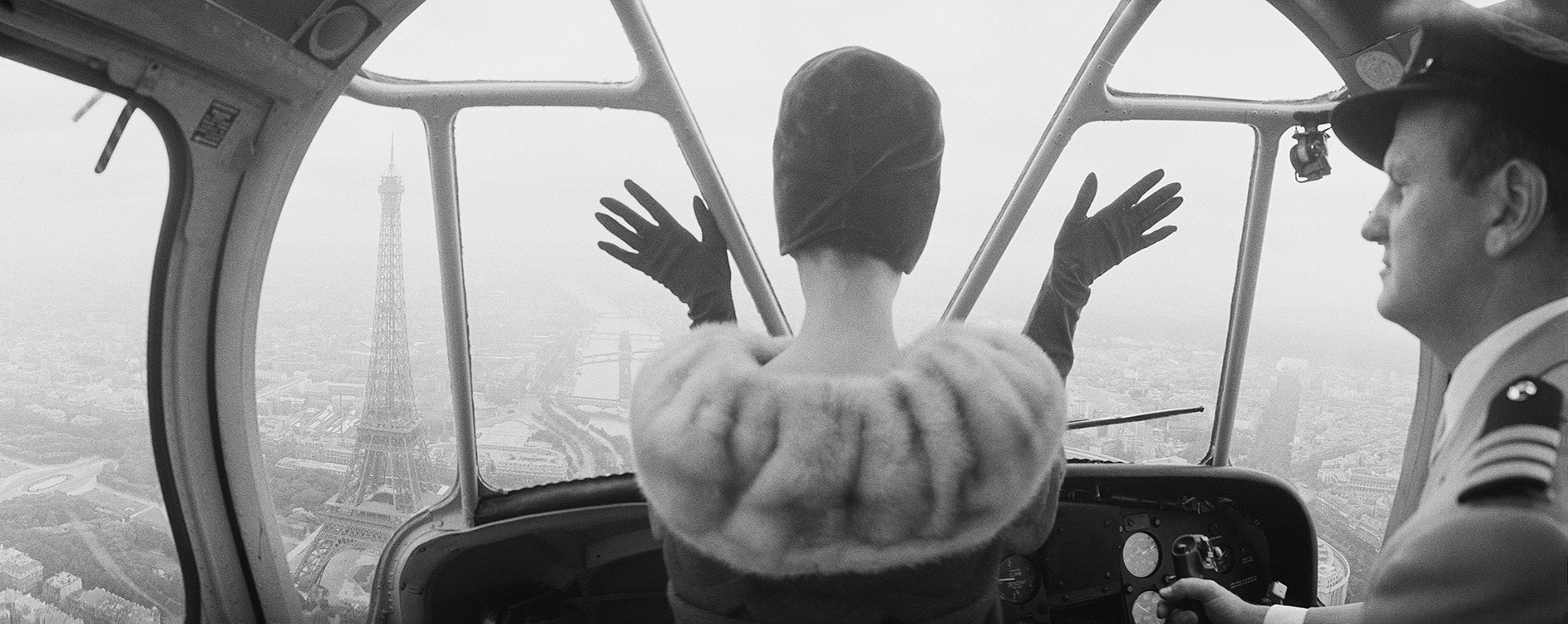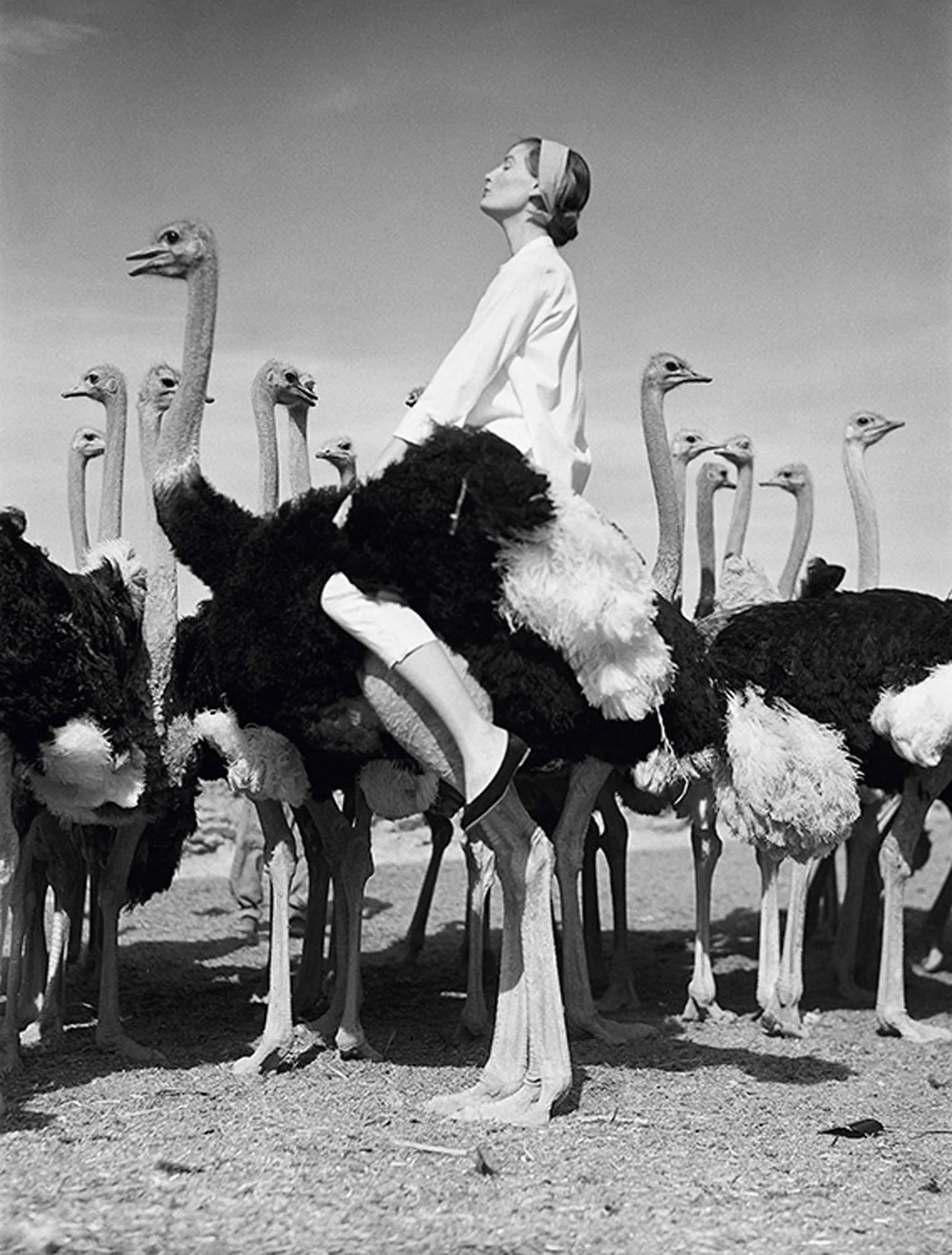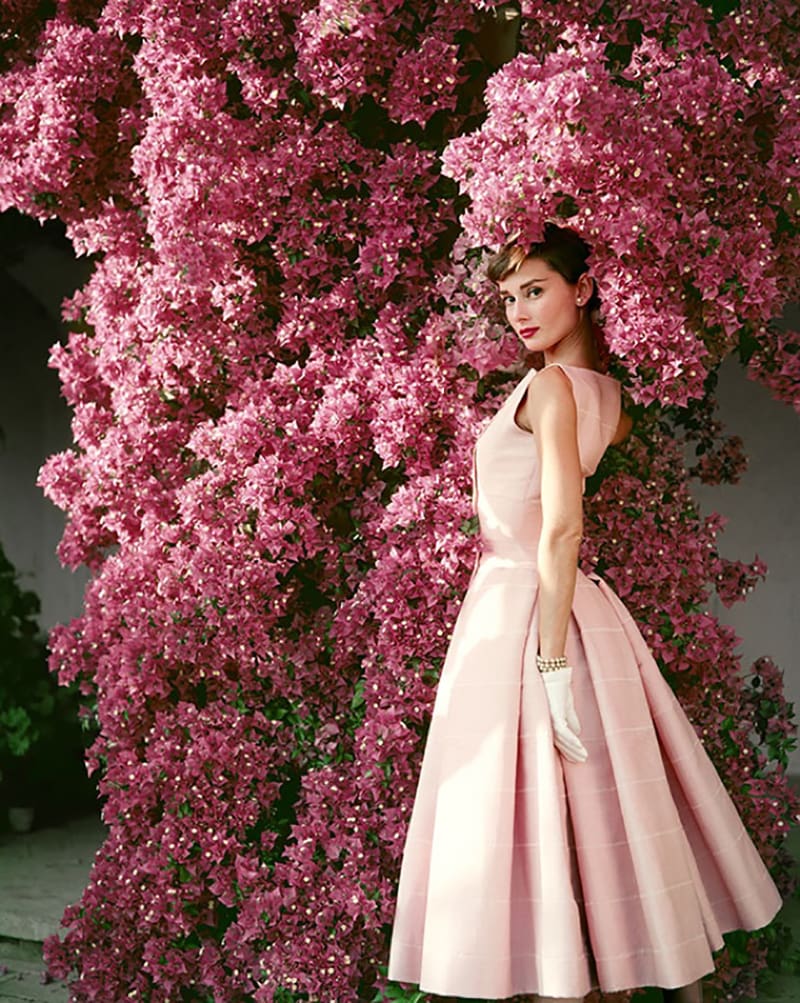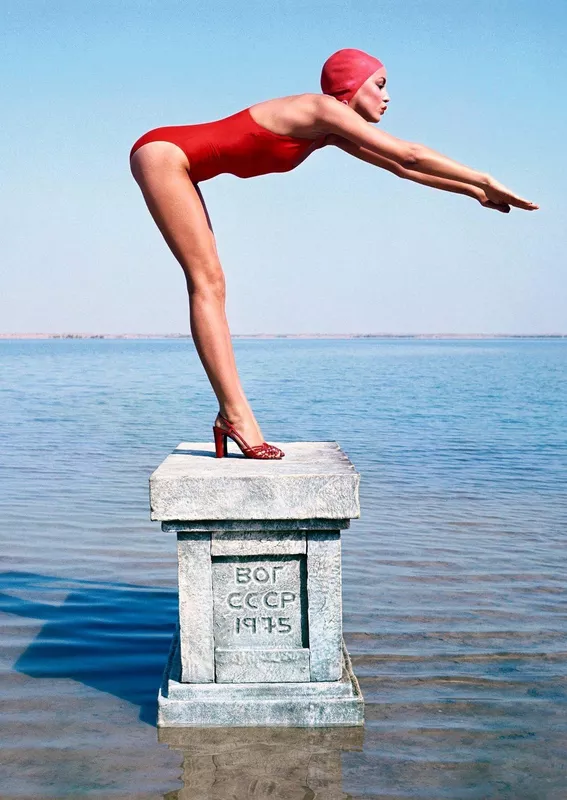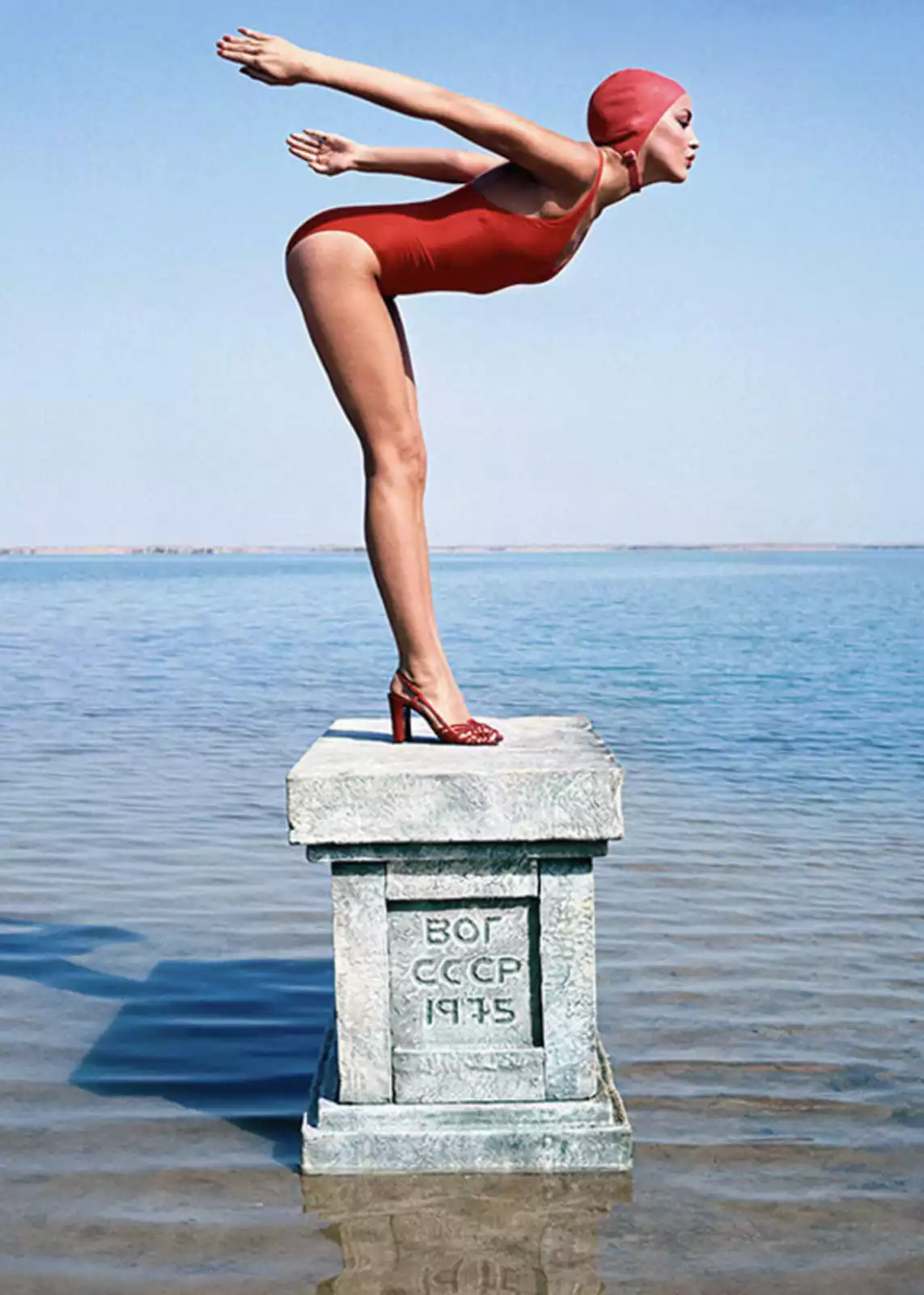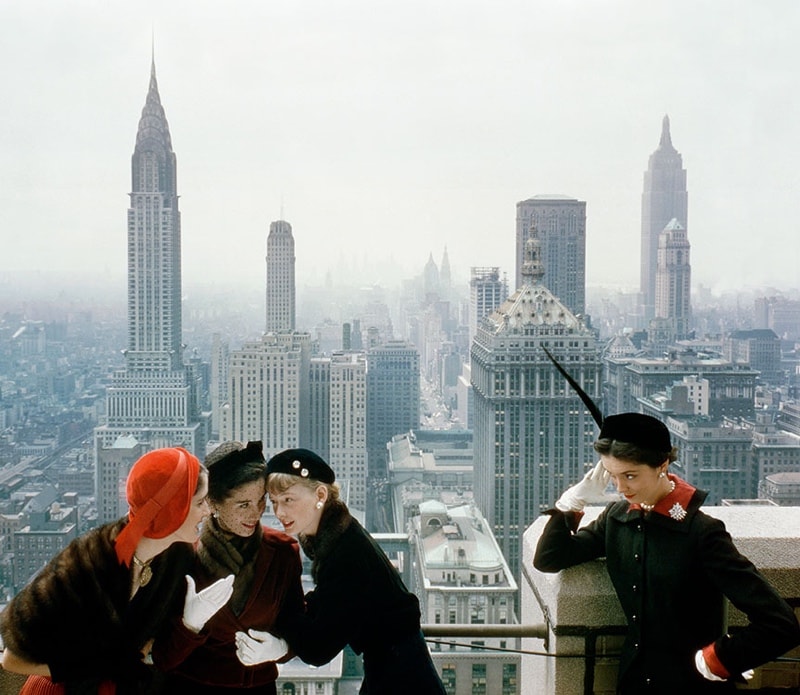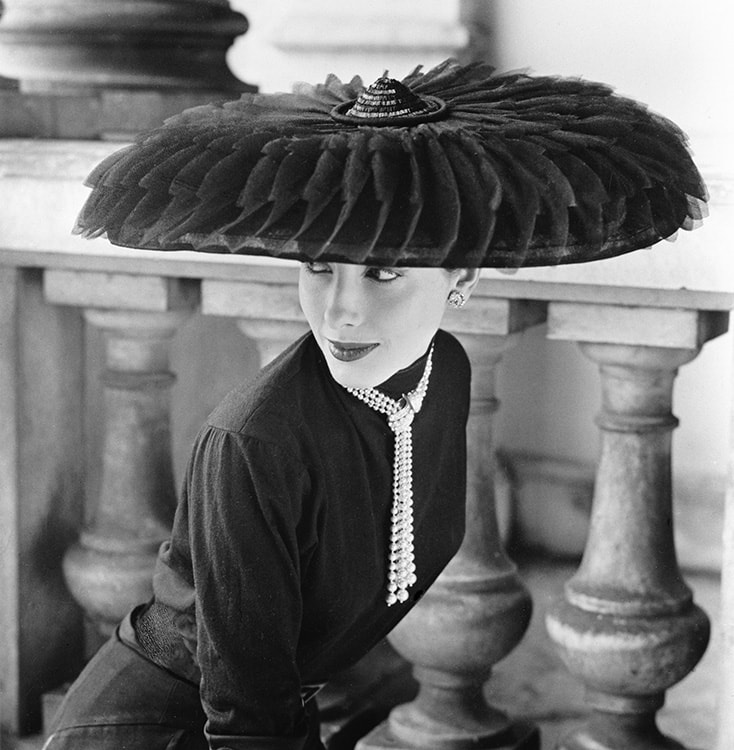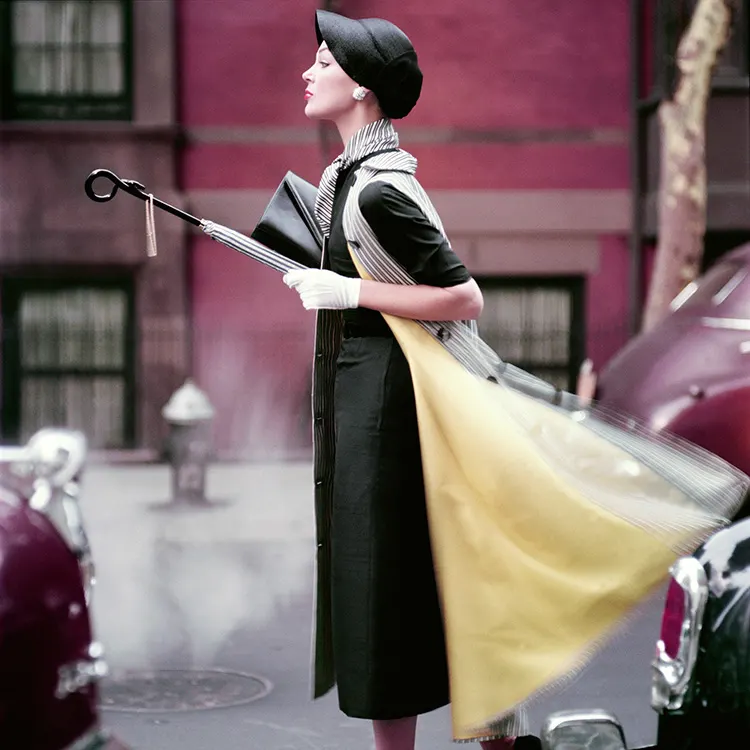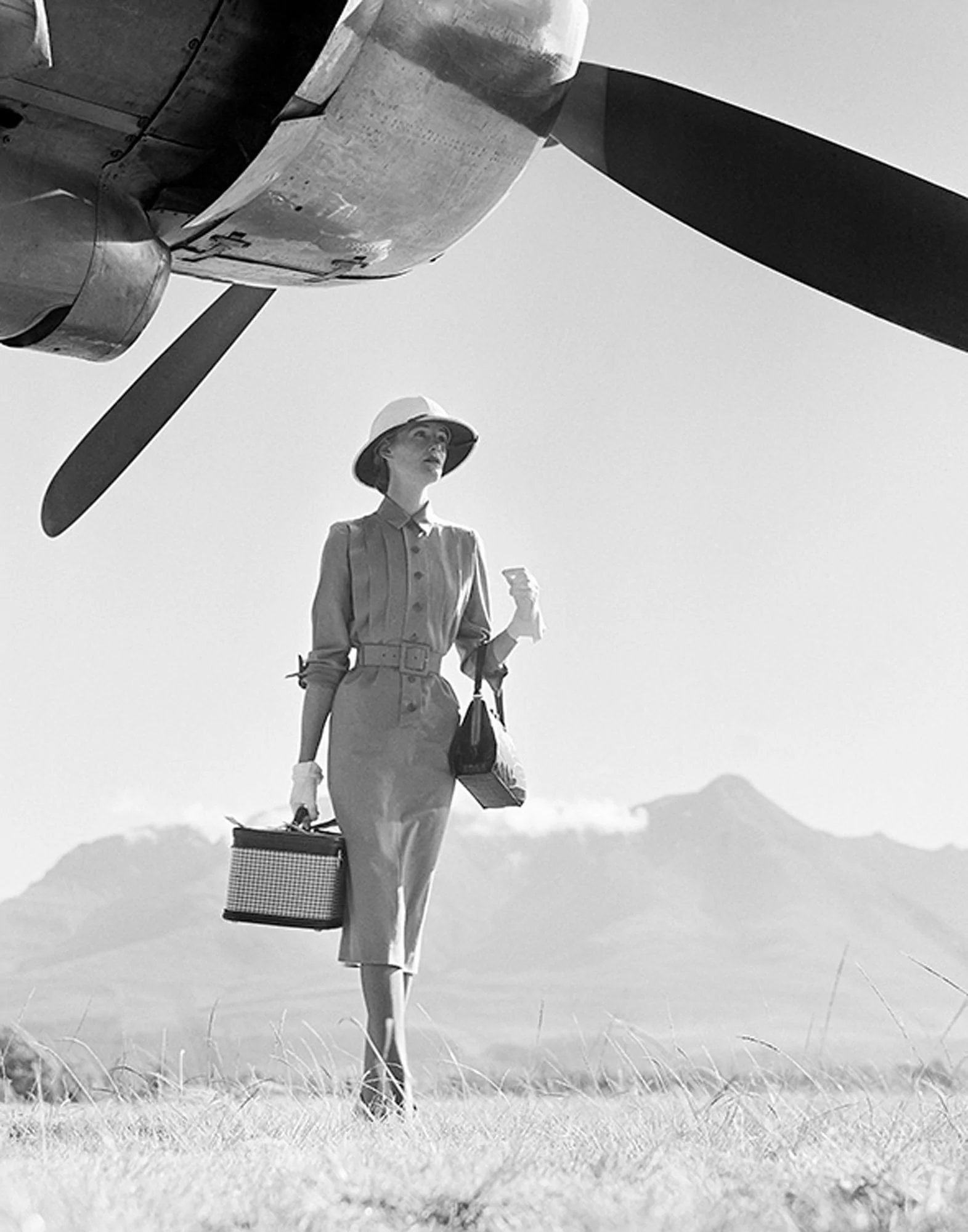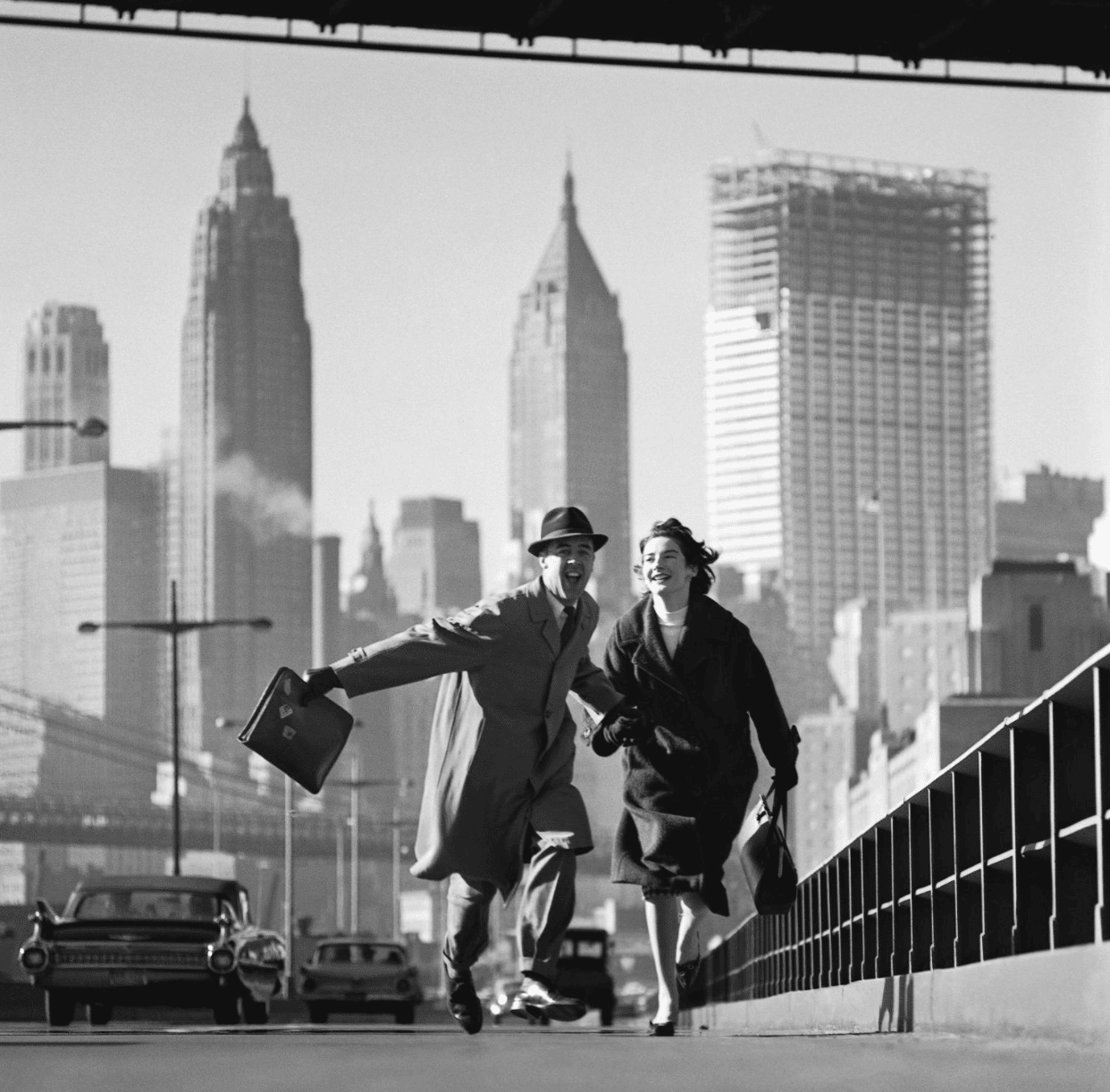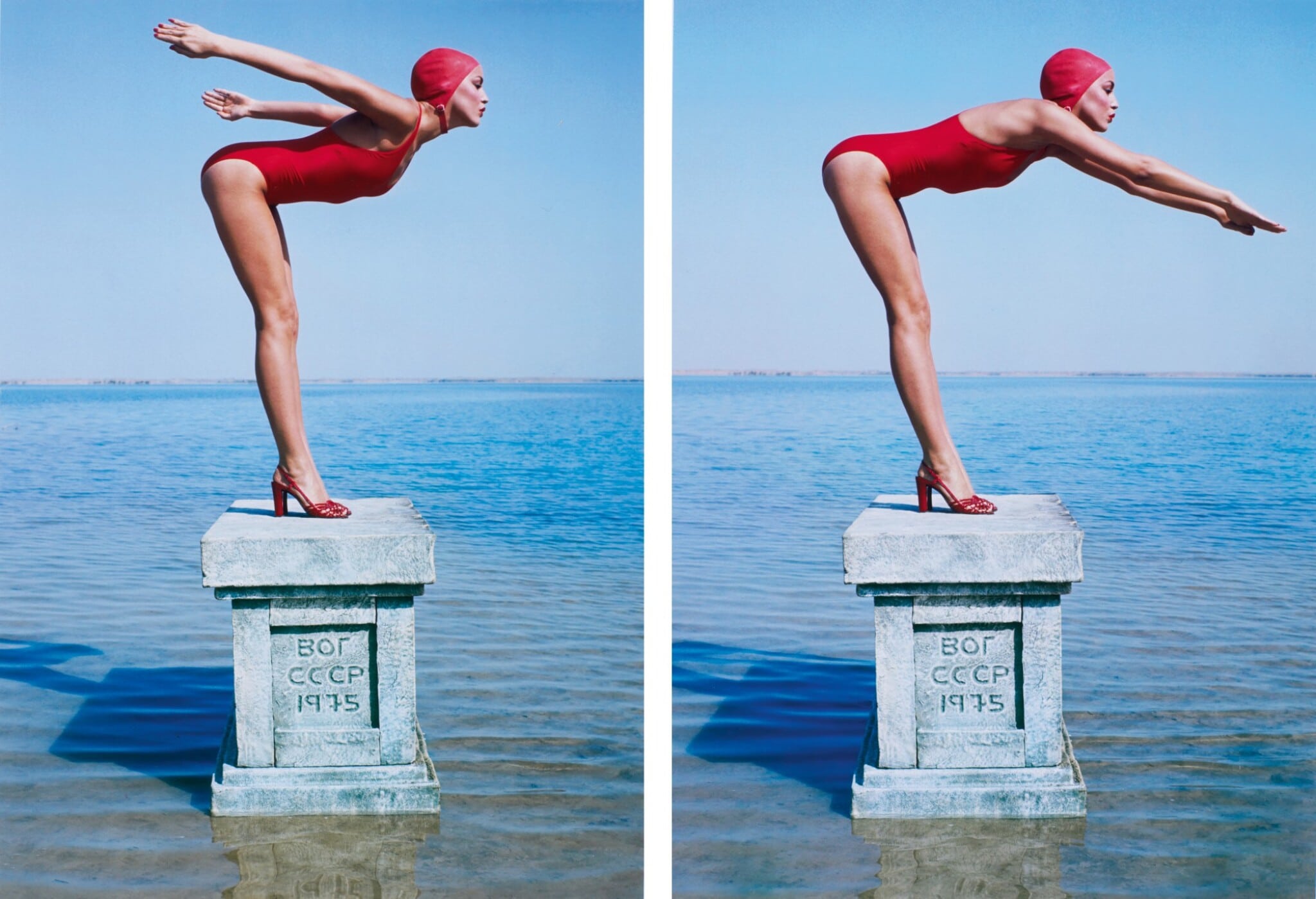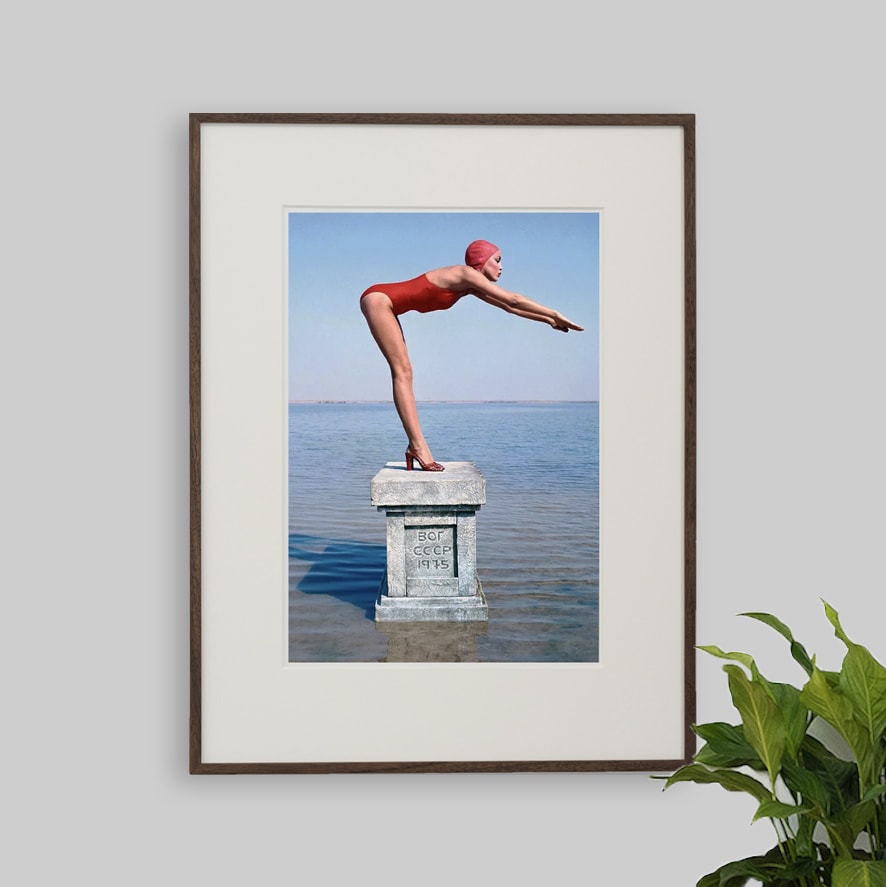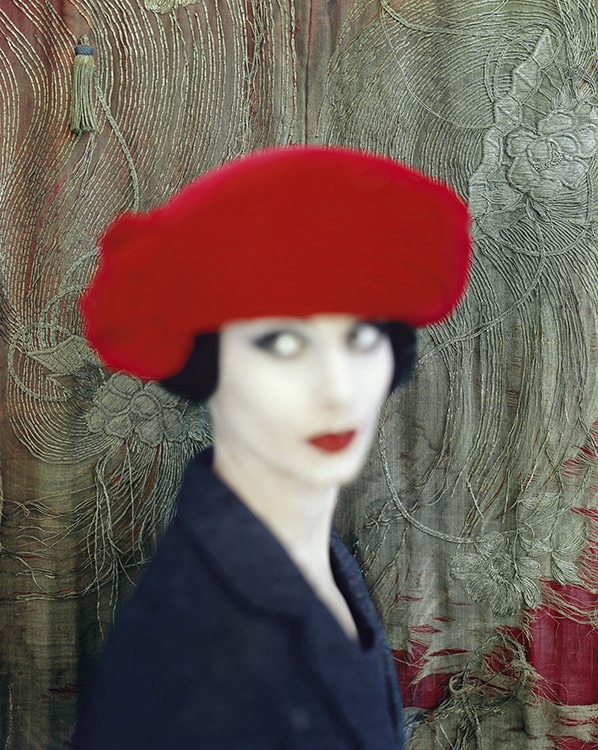Renowned for taking his subjects out of the studio, Norman Parkinson broke the mould by photographing his models in outdoor settings and natural light. This took portrait and fashion photography beyond the stiff formality of his predecessors, injecting an easy and casual elegance into the art.
Norman Parkinson Prints For Sale (9):
Norman Parkinson
Audrey Hepburn wearing Givenchy at ‘Villa Rolli’ farmhouse in Cecchina, Italy, 1955
Starting at £10,000
EnquireNorman Parkinson
Fashion Models on the Condé Nast building, Lexington Ave, NYC, 1949
Starting at £3,000
EnquireNorman Parkinson
Nena von Schlebrügge in a helicopter flying over the Eiffel Tower, 1960
Starting from £3,000
EnquireArtist Biography
Norman Parkinson
United Kingdom
B. 1913 – 1990
EnquireEarly Life
Norman Parkinson was born in London on 21 April 1913, the son of a wealthy barrister. He was educated at Westminster School, and began a career in photography with an apprenticeship to the society photographers, Speight and Sons, in 1931. In 1934, he established his own studio on Dover Street, London, and began to make his name photographing portraits.
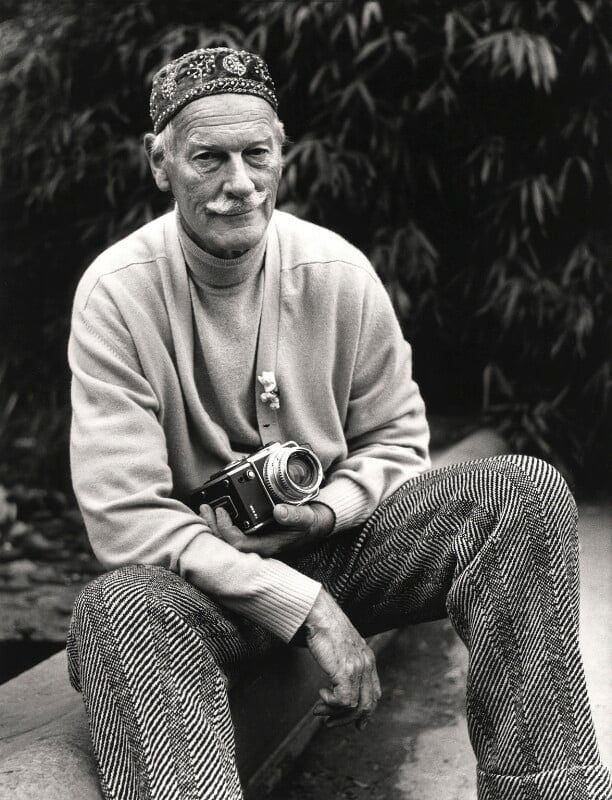
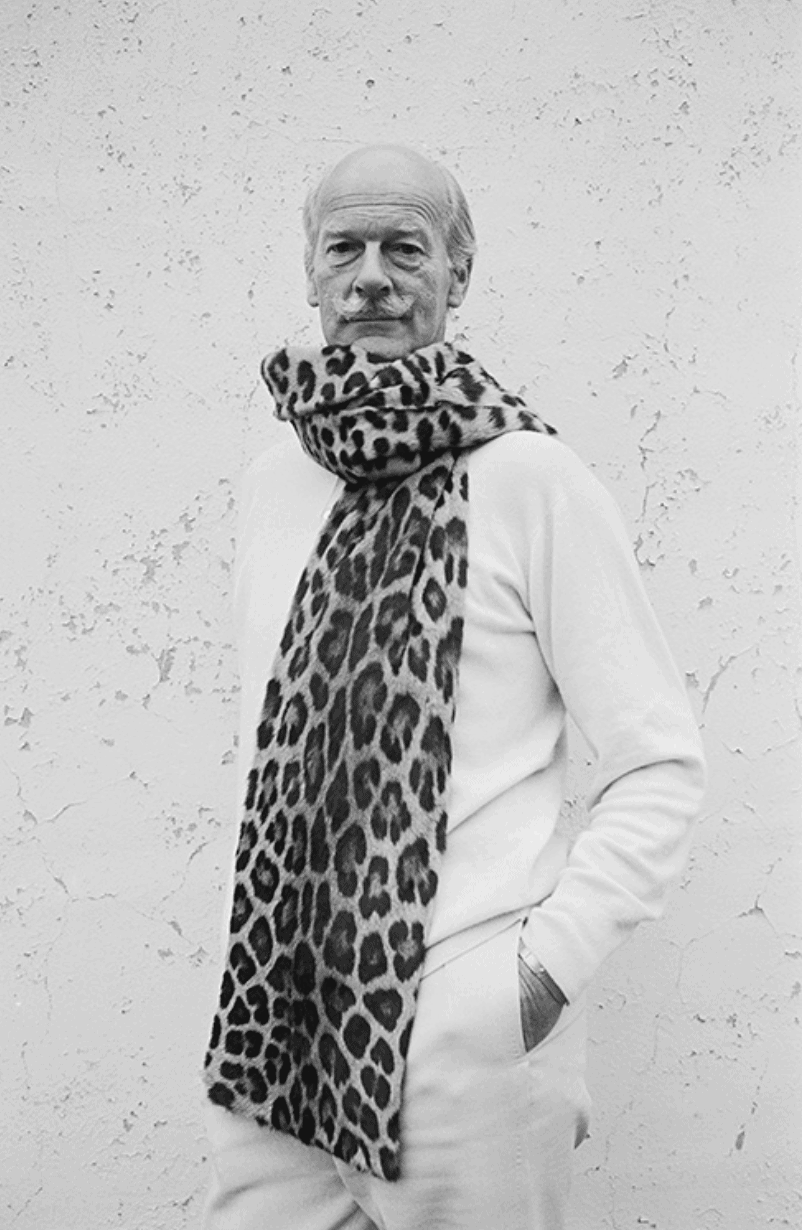
Norman Parkinson
United Kingdom
B. 1913 – 1990
EnquireFashion Photography
Parkinson’s fame grew once he began working for Harper’s Bazaar (from the mid 1930s) and Vogue (from around 1945). Inspired by the work of Hungarian photographer, Martin Munkácsi, who photographed his models in the open air, Parkinson specialised in a joyful, kinetic brand of fashion photography. His models were often outside, playing golf, riding in speedboats, jumping and even, in one famous case, riding an ostrich. Before Parkinson’s arrival at British Vogue in the early 1930s, the magazine, in the infancy of colour photography, had relied on imported photographers from Europe and America, and on material borrowed from its American sister publication. Though this would continue out of necessity during the war years, Parkinson’s English pastoralism gave British Vogue a distinct identity. Parkinson’s first photograph for Vogue was taken in the countryside in 1941; a fashion shot of a utilitarian cycling outfit. Followed swiftly by two spreads entitled ‘The Freedom of the Farm’, this was the start of an association that would last, with a five-year break in the 1960s, until it was terminated in 1978 in a dispute over copyright.
To add to the glamour, many of Parkinson’s shoots were set abroad, often in Africa or the Caribbean – he even moved to live in Tobago in 1963. This lent his work an exotic, jet-set appeal that was very popular in Britain, particularly during the austere 1950s.
Portrait Photography
While Parkinson is best known for helping to free fashion photography by taking it out of the studio and on location, his most innovative work as a portraitist did the opposite, closing in on a figure, or even a face, and caressing its components. Parkinson used this close cropping when he photographed significant early rock’n’roll performers, who exemplified a new kind of celebrity. Most famously, he would work closely with The Beatles, beginning with a shoot at a hotel on Russell Square, in 1963, when he emphasised their group identity by lining them up with their heads close together, four famous haircuts in a row.
That Parkinson survived the vagaries of the fashion world for so long was partly down to his appetite for work and an undimmed enthusiasm for innovation. His readiness to adapt his photography deflected criticism, and it remains hard to identify a style notably Parkinson’s alone. He treated the discipline with grand indifference, never regarding it as an art form: ‘People say, “How did you think of it?” But you didn’t, it happened. Something happened in the camera. My pictures turn out kind of charming and beautiful. I don’t know why’. He was rigorous in masking the shrewdness and hard work that accompanied every assignment, and developed what appeared to be a spontaneous, unstructured style. He conceded as the years went by that ‘almost every photograph that is particularly appealing and true has been arranged and rehearsed’.
Later Life
Parkinson, like Cecil Beaton, was able to keep working through several distinct periods of fashion. Both his ability as a photographer, and his thirst for fame and glamour, kept his career going into the 1980s – by which time he had become something of a British national treasure. He died in Singapore on 14 February 1990.
